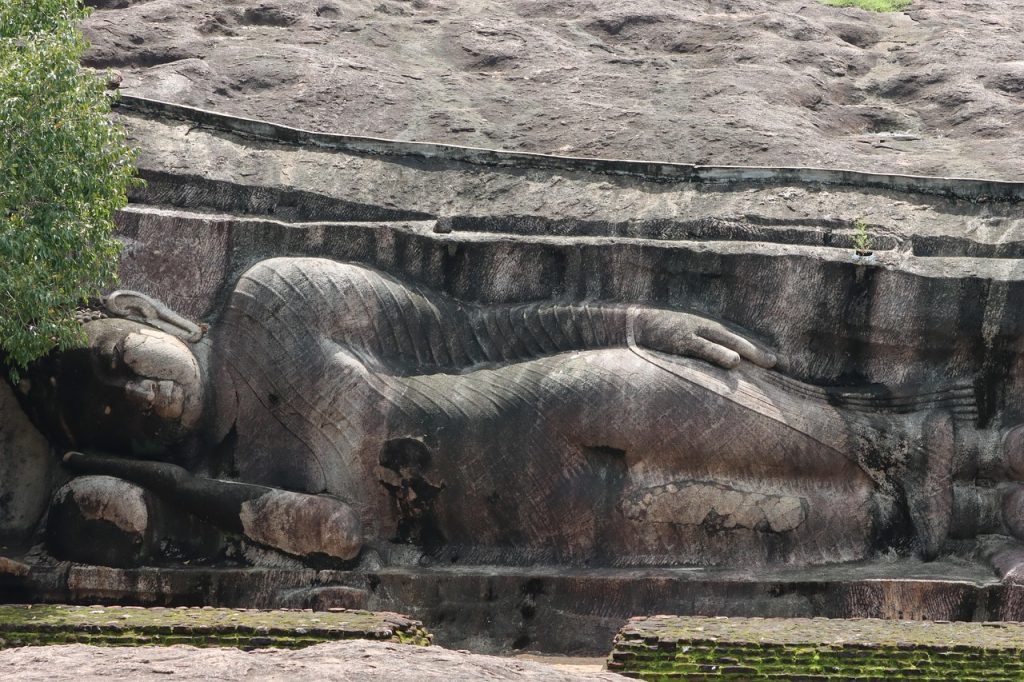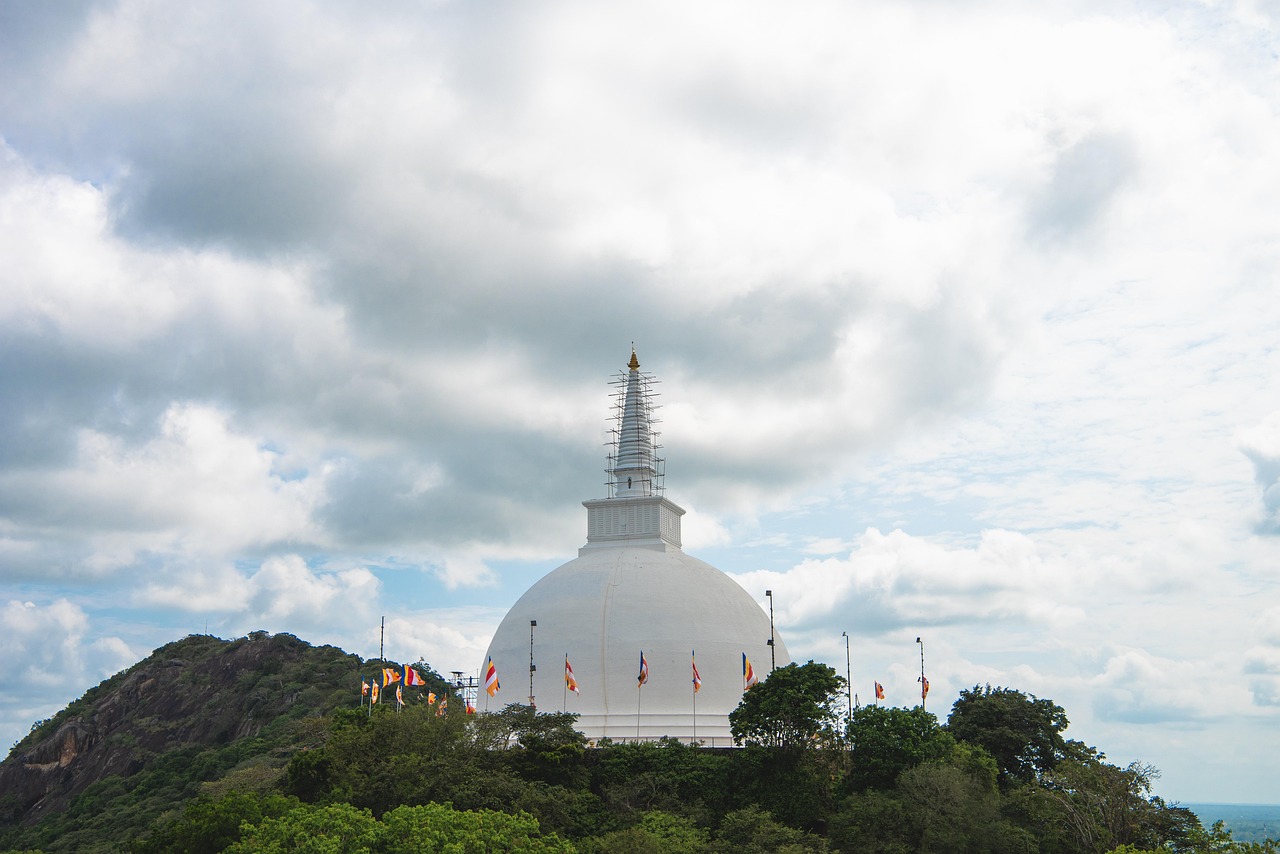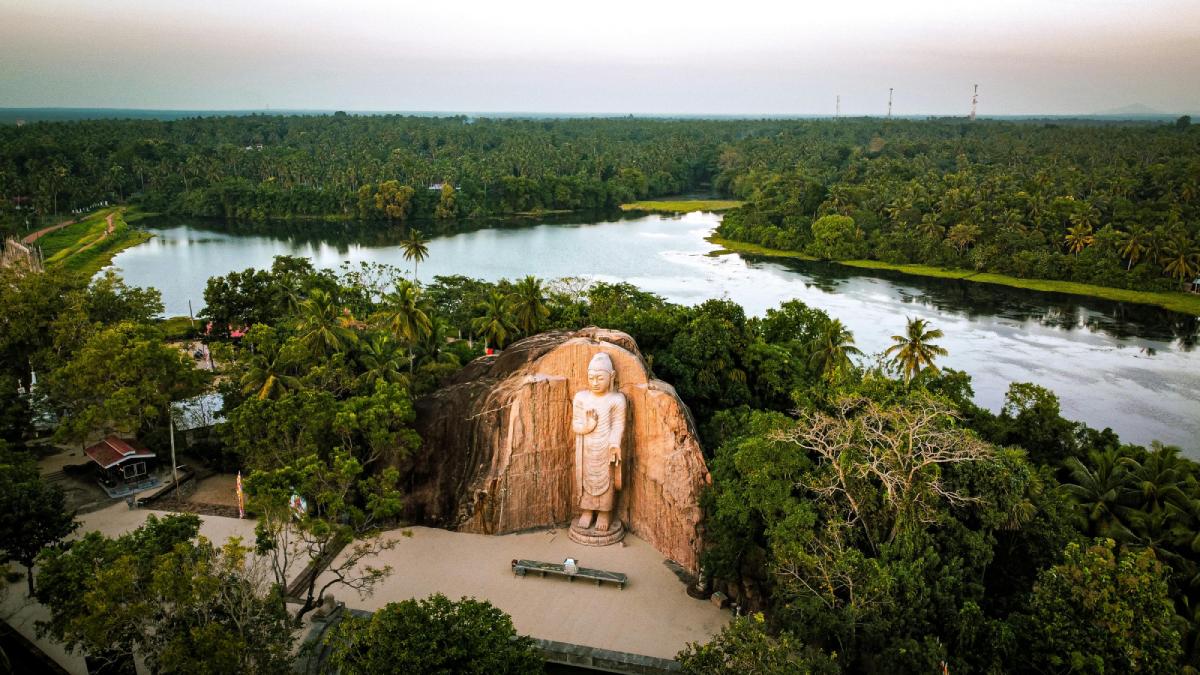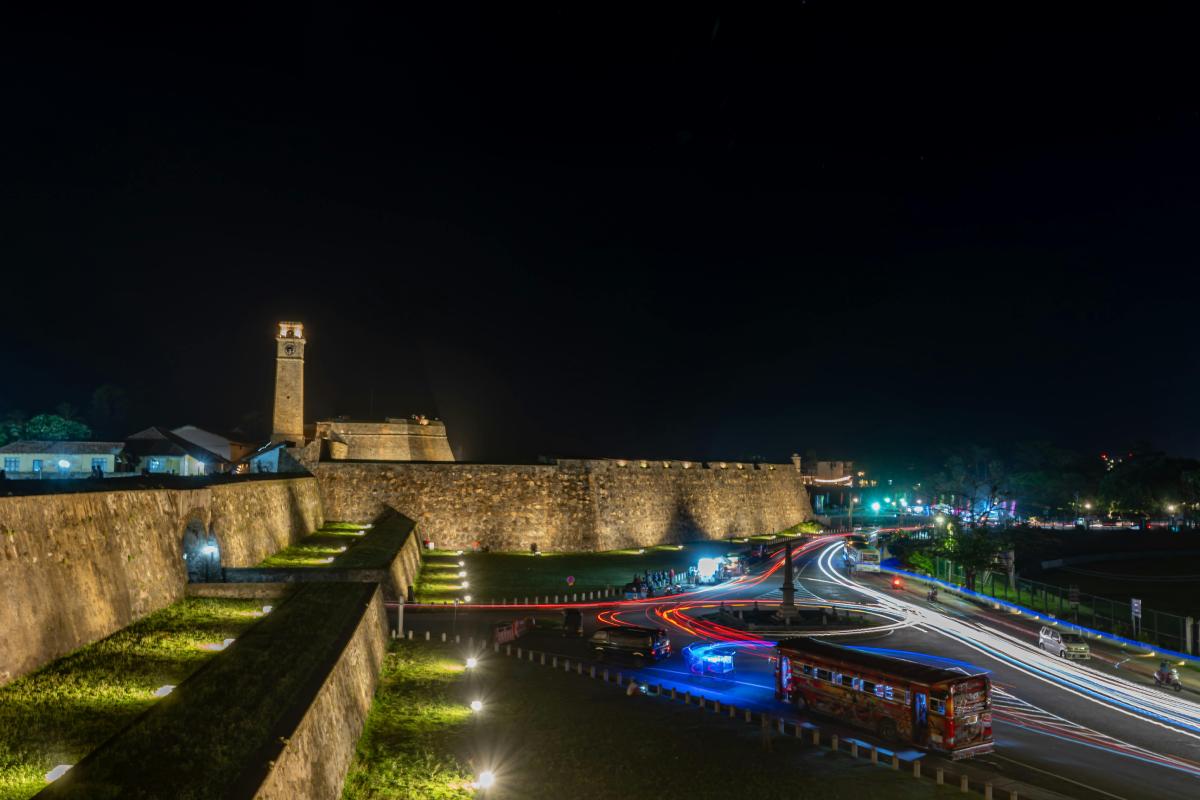Sri Lanka, the teardrop-shaped island nation south of India, boasts one of the world’s oldest recorded histories spanning over 2,500 years. Known as Ceylon until 1972, this tropical paradise has witnessed the rise and fall of ancient kingdoms, colonial conquests, and the struggles of modern nation-building. The island’s strategic position in the Indian Ocean has made it a crucial crossroads of maritime trade, cultural exchange, and political influence throughout the centuries. The Rich Tapestry of Sri Lankan History.
Ancient Beginnings: The Rich Tapestry of Sri Lankan History
The documented history of Sri Lanka begins with the arrival of Prince Vijaya and his followers from northern India around 543 BCE, according to the ancient chronicle, the Mahavamsa. This legendary prince, said to be descended from a lion (sinha), gave his name to the Sinhalese people who would dominate the island’s lowlands for centuries to come. Archaeological evidence suggests that the island was inhabited much earlier, with prehistoric settlements dating back to at least 125,000 years ago.
The early Sinhalese settlers established their first capital at Anuradhapura around the 4th century BCE. This ancient city would grow to become one of the greatest urban centers of the ancient world, rivaling cities like Rome and Athens in its grandeur. The sophisticated irrigation systems, massive stupas (Buddhist monuments), and intricate stone carvings that remain today testify to the advanced civilization that flourished here.
The Buddhist Revolution
The arrival of Buddhism in Sri Lanka marked a pivotal moment in the island’s history. In 247 BCE, Mahinda, son of the great Indian Emperor Ashoka, brought Buddhism to the island during the reign of King Devanampiya Tissa. This event, celebrated annually during the Poson festival, transformed Sri Lankan society and culture fundamentally.
Buddhism quickly took root, and Sri Lanka became one of the world’s earliest Buddhist nations. The introduction of the religion coincided with remarkable developments in art, architecture, and literature. The Sinhalese developed their own script and created some of the world’s finest Buddhist art and architecture. The ancient stupas of Anuradhapura, including the Ruwanwelisaya and Jetavanaramaya, were among the tallest structures in the ancient world.
The Buddhist monasteries became centers of learning, preserving not only religious texts but also knowledge in medicine, astronomy, and various crafts. The Pali Canon, the complete Buddhist scriptures, was first committed to writing in Sri Lanka during the 1st century BCE, ensuring the preservation of Buddha’s teachings for future generations.
The Golden Age of Anuradhapura
From the 3rd century BCE to the 10th century CE, Anuradhapura served as the capital of Sri Lanka, presiding over what many consider the golden age of Sinhalese civilization. During this period, the island developed one of the most sophisticated hydraulic civilizations in the world. The ancient engineers constructed an intricate network of reservoirs, canals, and irrigation channels that allowed agriculture to flourish in the dry zones of the island.
The massive reservoirs, called tanks, were engineering marvels of their time. The Kala Wewa, built in the 5th century CE, covered an area of over 6,000 acres, while the Parakrama Samudra, constructed later, was even larger. These irrigation works supported a population that may have reached over a million people, making ancient Sri Lanka one of the most densely populated regions in the world.
Notable rulers of this period include King Dutthagamani (161-137 BCE), who unified the island after defeating the Tamil king Elara, and King Mahasena (276-303 CE), who was responsible for numerous irrigation projects and Buddhist monuments. The period also saw the flourishing of Sinhalese literature, with works like the Mahavamsa chronicling the island’s history and the Sigiri graffiti representing some of the earliest examples of Sinhalese poetry.
Tamil Influence and the Chola Period
While the Sinhalese dominated the central and southern parts of the island, Tamil influence was always present, particularly in the northern regions. Tamil traders, soldiers, and settlers had been arriving from South India since ancient times, and several Tamil kingdoms established themselves in the north.
The most significant Tamil intervention came during the Chola period (993-1070 CE), when the powerful Chola dynasty of South India conquered much of Sri Lanka. The Cholas moved the capital from Anuradhapura to Polonnaruwa and ruled the island as a province of their empire. While this period saw the decline of Sinhalese power, it also brought new influences in art, architecture, and administration.
The Chola period ended when King Vijayabahu I (1055-1110 CE) successfully expelled the invaders and restored Sinhalese rule. However, the capital remained at Polonnaruwa, which became the center of the next great period of Sinhalese civilization.
The Polonnaruwa Period: Medieval Splendor

The Polonnaruwa period (1070-1293 CE) represented a renaissance of Sinhalese culture and power. King Parakramabahu I (1153-1186 CE), known as Parakramabahu the Great, was perhaps the most celebrated ruler of this era. His famous declaration that “not a drop of water that flows from the mountains should reach the sea without serving the purpose of man” epitomized the hydraulic civilization that reached its zenith during his reign.
Under Parakramabahu I, the irrigation system was expanded and refined, new reservoirs were built, and agriculture flourished. The king also launched successful military campaigns against South India and even sent expeditions to Burma and other Southeast Asian kingdoms. The period saw remarkable achievements in art and architecture, with the creation of masterpieces like the Gal Vihara rock sculptures and the Lankatilaka temple.
King Nissanka Malla (1187-1196 CE) continued the tradition of great building projects, but his reign marked the beginning of the decline of Polonnaruwa. Internal conflicts, invasions from South India, and the enormous cost of maintaining the irrigation systems gradually weakened the kingdom.
The Decline and Fragmentation
The 13th century marked the beginning of a long period of political fragmentation and decline. The great irrigation systems fell into disrepair, and the population gradually moved to the southwestern wet zone of the island. The abandoned cities of Anuradhapura and Polonnaruwa were reclaimed by the jungle, their magnificent monuments forgotten until rediscovered by British archaeologists in the 19th century.
Several factors contributed to this decline. The constant warfare with South Indian kingdoms drained the royal treasury, while the maintenance of the complex irrigation systems required enormous resources. Additionally, the rise of maritime trade routes reduced the importance of overland trade, affecting the economic base of the inland kingdoms.
During this period, power became fragmented among several small kingdoms. The most significant was the Kingdom of Dambadeniya, which served as the capital from 1220 to 1345 CE. Later capitals included Gampola and Kotte, as political power gradually shifted toward the coast.
The Arrival of the Portuguese
European contact with Sri Lanka began in 1505 when Portuguese explorer Lourenço de Almeida arrived at the port of Colombo. The Portuguese were initially interested in the island’s cinnamon trade, but they gradually became involved in local politics and eventually established control over much of the maritime provinces.
The Portuguese period (1505-1658) brought significant changes to Sri Lankan society. They introduced Christianity, built fortifications, and established a colonial administration. However, their rule was marked by religious persecution and cultural suppression. The Portuguese destroyed many Buddhist and Hindu temples and forced conversions to Christianity.
The interior of the island remained under the control of the Kingdom of Kandy, which successfully resisted Portuguese attempts at conquest. The rugged terrain of the central highlands and the military skill of the Kandyan kings kept the Portuguese at bay for over a century.
Dutch Colonial Rule
The Dutch East India Company gradually displaced the Portuguese during the 17th century, finally completing their conquest of the maritime provinces in 1658. The Dutch period (1658-1796) was characterized by more systematic colonial administration and economic exploitation.
The Dutch were primarily interested in Sri Lanka’s commercial potential. They developed the cinnamon trade, introduced new crops like coffee, and established a more efficient administrative system. The Dutch also introduced Roman-Dutch law, which still influences Sri Lankan legal system today.
Unlike the Portuguese, the Dutch were more tolerant of local religions and cultures, though they promoted their own Reformed Christianity. They established schools and created a class of Dutch Burgher citizens who would play important roles in Sri Lankan society for centuries to come.
The Kingdom of Kandy continued to maintain its independence during the Dutch period, though it was increasingly isolated and economically dependent on the colonial powers for access to international trade.
British Colonial Era
The British captured the Dutch territories in 1796 and finally conquered the Kingdom of Kandy in 1815, bringing the entire island under European control for the first time. The British period (1796-1948) was the longest and most transformative of the colonial eras.
The British developed Sri Lanka’s plantation economy, initially focusing on coffee and later switching to tea after coffee plantations were devastated by disease in the 1870s. They also established rubber plantations and developed the infrastructure necessary to support export agriculture, including railways, roads, and ports.
The plantation economy required large amounts of labor, which the British supplied by importing Tamil workers from South India. This created a new ethnic group, the Indian Tamils, who would become a significant minority in the island’s population.
The British also introduced English education, modern legal systems, and democratic institutions. Christian missionary activity expanded, and a new English-educated elite emerged that would eventually lead the independence movement.
The Independence Movement
The Sri Lankan independence movement began in the early 20th century with the formation of political organizations like the Ceylon National Congress in 1919. Unlike in some other colonies, the independence movement in Sri Lanka was largely peaceful and constitutional.
Key figures in the independence movement included D.S. Senanayake, who became the first Prime Minister, and S.W.R.D. Bandaranaike, who would later lead the country toward greater autonomy. The movement gained momentum after World War II, and Britain granted independence to Ceylon on February 4, 1948.
Post-Independence Challenges
Independent Sri Lanka faced numerous challenges from the beginning. The country inherited a plantation economy dependent on export crops, significant ethnic and religious divisions, and a democratic system that struggled to accommodate diverse interests.
The 1950s saw the rise of Sinhalese nationalism under S.W.R.D. Bandaranaike, who made Sinhala the only official language and promoted Buddhist interests. These policies alienated the Tamil minority and created lasting ethnic tensions.
Economic problems persisted throughout the early decades of independence. The country remained dependent on tea, rubber, and coconut exports, making it vulnerable to world market fluctuations. Various governments experimented with different economic policies, from free-market approaches to socialist-inspired programs.
The Ethnic Conflict
Ethnic tensions that had been building since independence erupted into open conflict in the 1980s. The Liberation Tigers of Tamil Eelam (LTTE) began an armed struggle for an independent Tamil state in the north and east of the island. The conflict lasted for nearly three decades, causing enormous suffering and hindering the country’s development.
The war finally ended in May 2009 with the military defeat of the LTTE. However, the legacy of the conflict continues to influence Sri Lankan politics and society. The country is still working to achieve meaningful reconciliation between its ethnic communities and address the root causes of the conflict.
Modern Sri Lanka
Today, Sri Lanka is a middle-income country with a diverse economy that includes textiles, tourism, information technology, and traditional agriculture. The country has made significant progress in human development indicators, with high literacy rates and life expectancy.
However, Sri Lanka continues to face challenges including political instability, economic difficulties, and the ongoing process of post-conflict reconciliation. The country experienced a severe economic crisis in 2022, leading to mass protests and political upheaval.
Conclusion
The history of Sri Lanka is a testament to the resilience and adaptability of its people. From the ancient hydraulic civilizations of Anuradhapura and Polonnaruwa to the modern democratic state, the island has continuously evolved while maintaining its unique cultural identity.
The lessons of Sri Lankan history – the importance of unity in diversity, the need for sustainable development, and the value of preserving cultural heritage while embracing change – remain relevant today. As Sri Lanka moves forward in the 21st century, it continues to draw on its rich historical legacy while building a future that honors its past and embraces its potential.
The island’s strategic location, educated population, and rich cultural heritage position it well for future success. However, realizing this potential will require addressing the challenges of ethnic reconciliation, economic development, and good governance that have their roots deep in the island’s complex and fascinating history.


